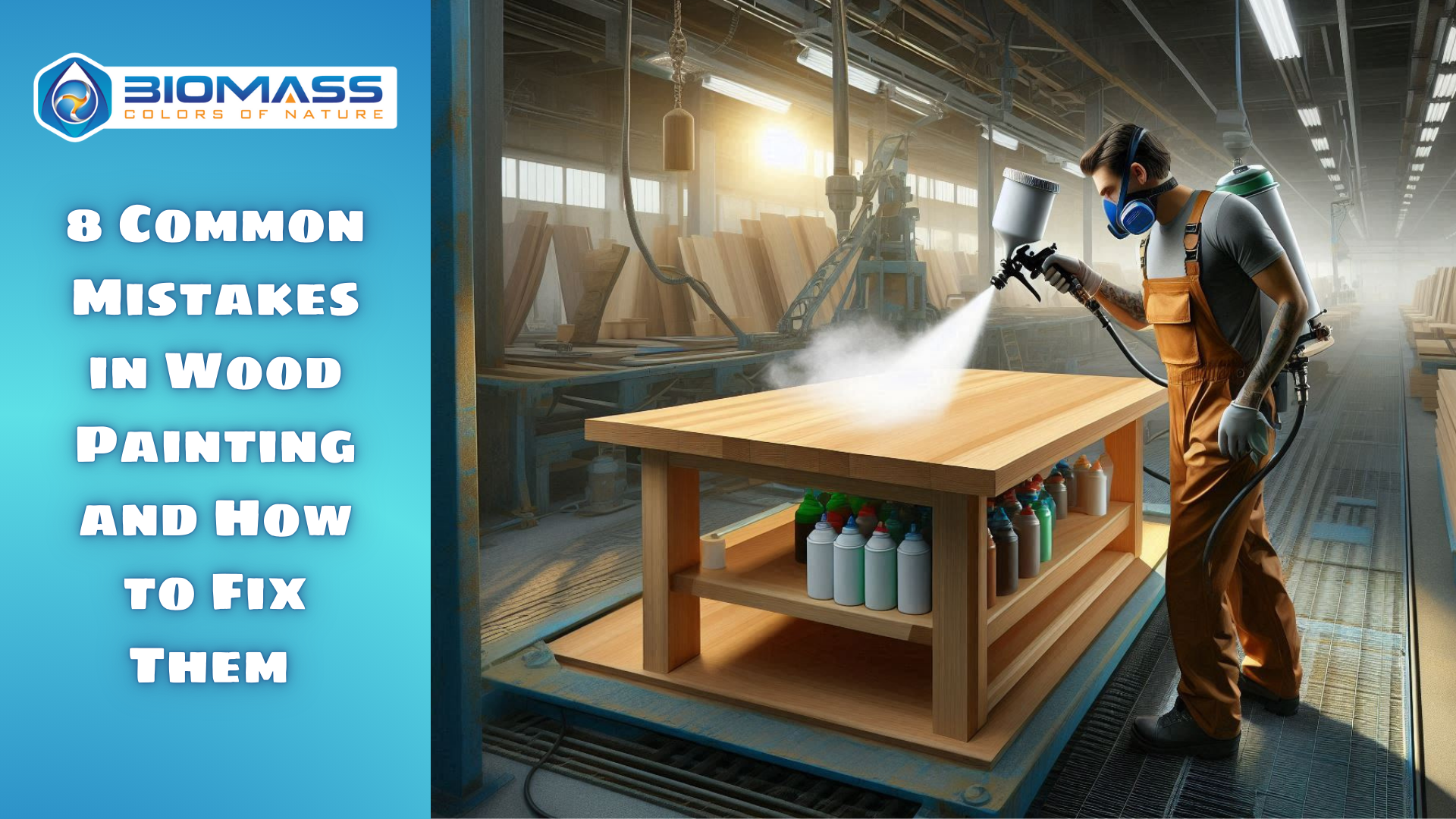Tin Biomass
8 Common Wood Painting Mistakes and How to Fix Them
Index
- I. Mistake in Wood Painting – Uneven Wood Surface
- II. Air Bubbles on the Paint Surface
- III. Uneven Paint Color
- IV. Peeling Wood Painting Surface
- V. Cracked Wood Painting Surface
- VI. Wood Painting Not Drying Properly
- VII. Yellowing Wood Painting Surface
- VIII. Visible Wood Painting Brush Streaks
- Tổng Kết
I. Mistake in Wood Painting – Uneven Wood Surface
The first common mistake is having an uneven wood surface with protrusions, cracks, or visible wood grain. This issue usually arises from inadequate sanding. Additionally, it can be a result of improper handling of wood grain.
How to Fix ueven wood surface:
- Sand the Wood Surface Thoroughly: Before painting, ensure that the wood surface is sanded thoroughly. This helps remove minor imperfections and creates a smoother surface.
- Use Wood Filler: For holes or cracks, apply wood filler to fill them in. Once the filler is dry, sand the surface again to ensure it is smooth.

II. Air Bubbles on the Paint Surface
Sometimes, painters may encounter frustrating air bubbles on the paint surface. These bubbles are often caused by over-mixing the paint or using the wrong painting tools. For instance, uneven spray application or improper use of brushes can contribute to this issue.
How to Fix It:
- Mix Paint Gently: When preparing the paint, mix it gently to avoid creating air bubbles.
- Use High-Quality Brushes or Rollers: Ensure you use high-quality brushes or rollers to minimize the creation of air bubbles. If bubbles appear, wait until the paint dries partially, then gently sand the surface and repaint.
- Filter the Paint: For specific types of paint, use a paint filter to ensure its smoothness before applying it to the surface.


IV. Peeling Wood Painting Surface
Sometimes, after painting, the surface may start to peel, with the paint coming off in patches. This usually happens because the wood surface was dirty, oily, or not properly sanded before painting.
How to Fix It Peeling Wood Painting Surface:
- Clean the Wood Surface: Before painting, clean the wood surface by wiping away or washing off any dirt and grease.
- Sand the Surface: Sand the wood surface to remove old paint layers and create a good adhesion for the new paint layer.
V. Cracked Wood Painting Surface
Painted surfaces may develop cracks over time due to various reasons. Two main causes are applying a paint layer that is too thick or exposure to extreme weather conditions such as excessive heat or cold.
How to Fix Wood Painting Cracking Surface Issues:
- Apply Thin and Even Layers: Use thin and even coats of paint, allowing each layer to dry completely before applying the next one.
- Avoid Painting in Unfavorable Weather: Do not paint when the weather is too hot, cold, or humid, as these conditions can affect the drying process of the paint.
- Use Flexible Water-Based Paint: Opt for water-based wood paint with flexible properties to minimize cracking. Water-based wood paint provides a robust protective layer for wooden products even in harsh weather conditions.
VII. Yellowing Wood Painting Surface
Oil-based paints can oxidize over time, leading to yellowing. This can also occur due to tannin bleed from the wood.
How to Fix Yellowing Paint Issues:
- Use Water-Based Paint or Paint with Anti-Yellowing Agents: Water-based paints are less prone to oxidation compared to oil-based paints. Additionally, some paints contain special anti-yellowing agents. For tannin bleed, water-based wood paints are better at sealing the oil in the wood than other types of paint.
- Sand and Repaint: If the surface has yellowed, sand it down and repaint using the appropriate paint.

VIII. Visible Wood Painting Brush Streaks
Summary Wood Painting Mistake
Understanding common wood finishing errors and knowing how to address them will help you achieve the best results for your projects. Most issues arise from the preparation stage. Always ensure thorough preparation before painting, including cleaning and sanding the wood surface, choosing the right paint and tools. This will help you avoid common mistakes and ensure your final product has a flawless and durable finish over time. Additionally, you may consider Biomass water-based wood paint for its outstanding features, such as resistance to yellowing, long-lasting color, and flexibility.
BIOMASS – FOR THE HEALTH OF EVERY VIETNAMESE FAMILY
BIOMASS – A PART OF BIOCHEM INTERNATIONAL CHEMICALS JOINT STOCK COMPANY
- Address: 66, Street No. 1, Block 1, Tan Phong Ward, District 7, Ho Chi Minh City.
- Tel: (+84-28) 3620 4207 | 3620 4208
- Fax: (+84-28) 3620 4206
- Website Biochem: www.biochem.vn
- Website Biomass: www.biomasscoating.com
- Email: contacts@biomasscoating.com






